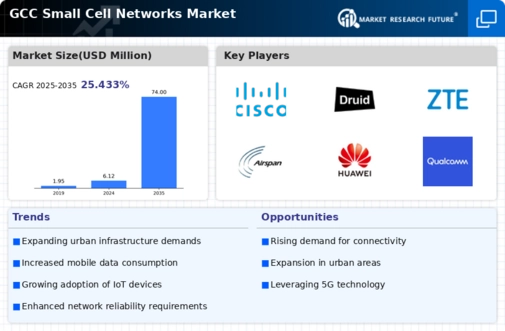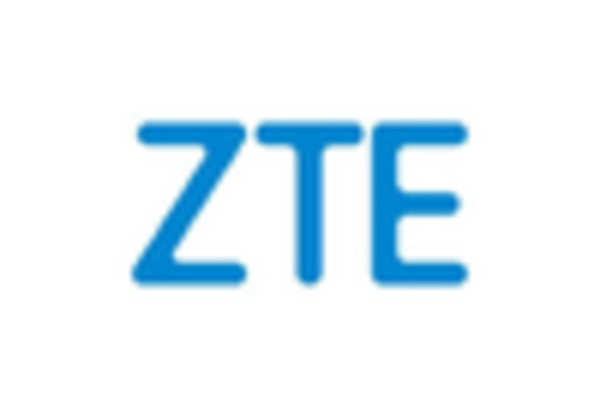Rising Mobile Data Consumption
The small cell-networks market is experiencing a surge in demand due to the increasing consumption of mobile data across the GCC region. As smartphone penetration rises, users are consuming more data-intensive applications, such as video streaming and online gaming. This trend is expected to drive the need for enhanced network capacity and coverage, which small cell networks can provide. According to recent statistics, mobile data traffic in the GCC is projected to grow at a CAGR of 40% over the next five years. This growth necessitates the deployment of small cell networks to ensure seamless connectivity and meet user expectations. Consequently, telecom operators are investing heavily in small cell infrastructure to enhance their service offerings and maintain competitive advantage in the rapidly evolving telecommunications landscape.
Growing Demand for 5G Connectivity
The small cell-networks market is poised for growth due to the increasing demand for 5G connectivity in the GCC region. As telecom operators prepare for the rollout of 5G networks, small cells are becoming a critical component of the infrastructure needed to support this next-generation technology. Small cells facilitate higher data rates, lower latency, and improved capacity, which are essential for 5G applications such as augmented reality and autonomous vehicles. The GCC countries are investing heavily in 5G technology, with projections indicating that the region will see a substantial increase in 5G subscriptions over the next few years. This trend is likely to drive the adoption of small cell networks, as they play a vital role in ensuring the successful implementation of 5G services.
Support for Smart City Initiatives
The small cell-networks market is being propelled by the GCC's commitment to developing smart city initiatives. Governments in the region are investing in advanced infrastructure to improve urban living standards, which includes the deployment of small cell networks. These networks are essential for supporting various smart city applications, such as IoT devices, traffic management systems, and public safety solutions. The integration of small cells into urban environments allows for better connectivity and data exchange, which is crucial for the success of smart city projects. As cities in the GCC aim to enhance their technological capabilities, the demand for small cell networks is likely to increase, creating new opportunities for service providers and technology vendors alike.
Enhanced Network Reliability Requirements
The small cell-networks market is influenced by the growing demand for enhanced network reliability in the GCC region. As businesses and consumers alike rely more on mobile connectivity for daily operations, the need for consistent and reliable network performance becomes paramount. Small cell networks offer a solution by providing localized coverage and reducing the load on macro networks. This is particularly important in densely populated areas where traditional networks may struggle to maintain service quality. The increasing reliance on mobile services for critical applications, such as telemedicine and remote work, further underscores the necessity for robust network solutions. As a result, telecom operators are likely to prioritize investments in small cell technology to meet these reliability demands.
Government Initiatives for Telecommunications Expansion
The small cell-networks market is benefiting from various government initiatives aimed at expanding telecommunications infrastructure in the GCC. Governments are recognizing the importance of robust connectivity for economic growth and are implementing policies to facilitate the deployment of small cell networks. These initiatives often include financial incentives, streamlined regulatory processes, and public-private partnerships. For instance, the GCC countries have set ambitious targets for improving broadband access, which directly correlates with the growth of small cell networks. As these initiatives gain momentum, the small cell-networks market is expected to flourish, providing opportunities for both local and international players in the telecommunications sector.

















Leave a Comment